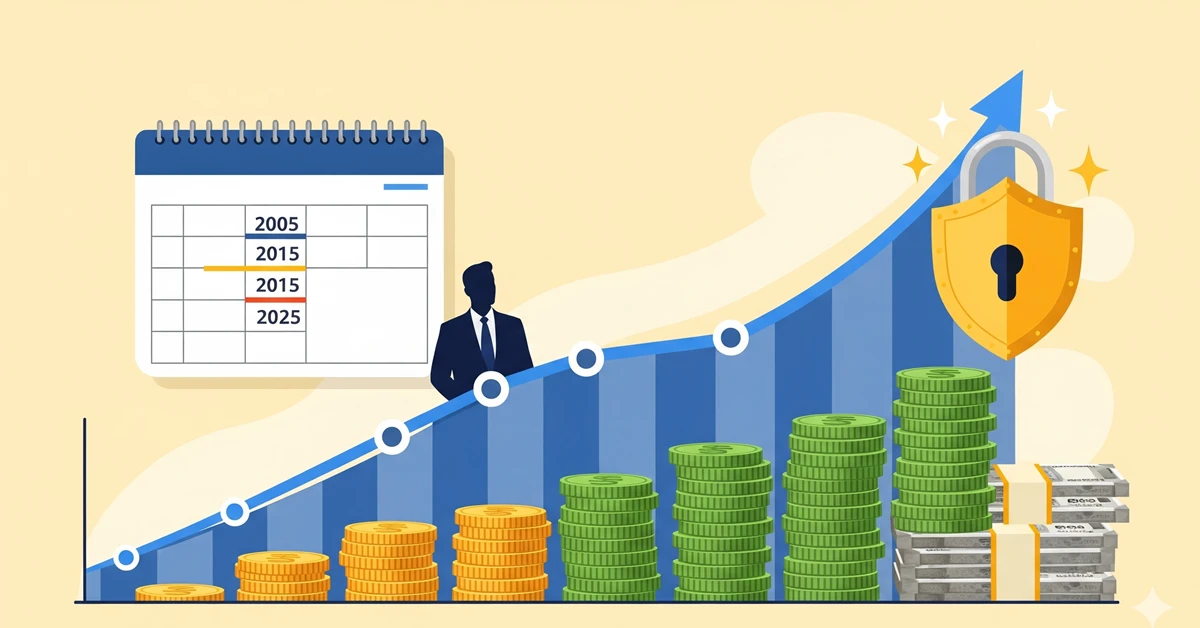Retirement is the one milestone that every working professional must prepare for. With rising costs and longer life expectancy, a retirement corpus of ₹2 Crore (or more) is now seen as the minimum for a secure post-retirement life. One of the most reliable tools for Indian salaried employees to achieve this goal is the Employees’ Provident Fund (EPF).
This article explains how EPF works, how to leverage it to build a ₹2 Crore nest egg, and includes sample calculations to make the process clear.
What is EPF and Why It’s Powerful
The Employees’ Provident Fund (EPF) is a mandatory retirement savings scheme for most salaried employees in India. Both the employee and employer contribute 12% of Basic + DA every month. EPF earns interest (around 8–8.25% annually, declared by the government each year), which compounds over time.
Key Benefits of EPF:
- Automatic savings and compounding
- Employer contributions add to your own
- Government-backed safety
- Tax benefits under Section 80C
- Lump sum at retirement plus monthly pension through EPS
How EPF Builds Wealth Over Time
Because EPF contributions happen every month, small amounts accumulate and compound into large sums over decades. The combination of employee contribution, employer contribution, annual salary hikes and compounding interest can easily reach ₹2 Crore by retirement for those who start early.
Sample EPF Scenarios: How ₹2 Crore Corpus Is Possible
Below are illustrative scenarios showing how different starting salaries, salary hikes and durations can build to ₹2 Crore or more.
| Scenario | Basic+DA (Starting) | Annual Hike | Years to Retirement | Estimated Total Contribution | Estimated Corpus at Retirement (8.15% p.a.) |
|---|---|---|---|---|---|
| Early Starter | ₹20,000 / month | 5% | 35 years | ~₹45–50 Lakh | ~₹2.0–2.1 Crore |
| Mid Career | ₹27,750 / month | 5% | 35 years | ~₹50 Lakh | ~₹2.0+ Crore |
| Modest Salary | ₹10,000 / month | 10% hike | 37 years | ~₹65–70 Lakh | ~₹1.95–2.0 Crore |
Assumptions:
- Contributions uninterrupted till retirement
- Employer portion to EPF considered (EPS separate)
- No premature withdrawals
- EPF rate stable at 8.15–8.25%
Steps to Reach ₹2 Crore With EPF
- Start Early – The sooner you begin, the longer compounding works.
- Maximise Basic+DA – Since EPF is a % of Basic+DA, negotiate a structure with higher base pay.
- Use Voluntary Provident Fund (VPF) – Top up your EPF by contributing more voluntarily.
- Don’t Withdraw Early – Premature withdrawals cut compounding and can delay the ₹2 Crore goal.
- Track Interest Rates – Adjust contributions if EPF rates change.
- Ensure Proper Transfers – When changing jobs, transfer your EPF to avoid breaks.
Advantages of EPF Over Other Instruments
| Feature | EPF | Mutual Funds | Bank FDs |
|---|---|---|---|
| Government-Backed | ✅ Yes | ❌ No | ✅ Limited (DICGC cap) |
| Employer Contribution | ✅ Yes | ❌ No | ❌ No |
| Tax Benefit | ✅ 80C + tax-free interest (subject to limits) | ✅ 80C ELSS only | ✅ 80C 5-year FDs |
| Interest/Return Stability | High & predictable | Market-linked | Low to moderate |
| Lock-in | Till retirement | 3 years (ELSS) | 5 years (tax FDs) |
Pitfalls and Things to Watch Out For
- Interest Rate Changes: Government revises EPF rates yearly. Lower rates slow growth.
- Inflation: ₹2 Crore in 30 years may buy less due to rising prices.
- EPS (Pension) Split: A portion of employer contribution goes to EPS, not EPF corpus.
- Job Breaks: Long gaps reduce contributions.
Building More Than ₹2 Crore
If you’re starting late or want a bigger cushion, combine EPF with:
- Public Provident Fund (PPF)
- National Pension System (NPS)
- Equity Mutual Funds or SIPs
- Insurance-backed retirement plans
This creates a diversified retirement portfolio.
Conclusion
With disciplined contributions, smart salary structuring and patience, your EPF account can grow into a ₹2 Crore+ retirement corpus. The key is consistency and avoiding premature withdrawals. Start today, keep track of your statements, and let compounding do the heavy lifting.
Disclaimer
This article is for informational and educational purposes only. It does not constitute financial advice. Actual returns and corpus amounts depend on interest rates, salary growth, contributions and regulatory changes. Please consult a qualified financial planner for personalised advice.

